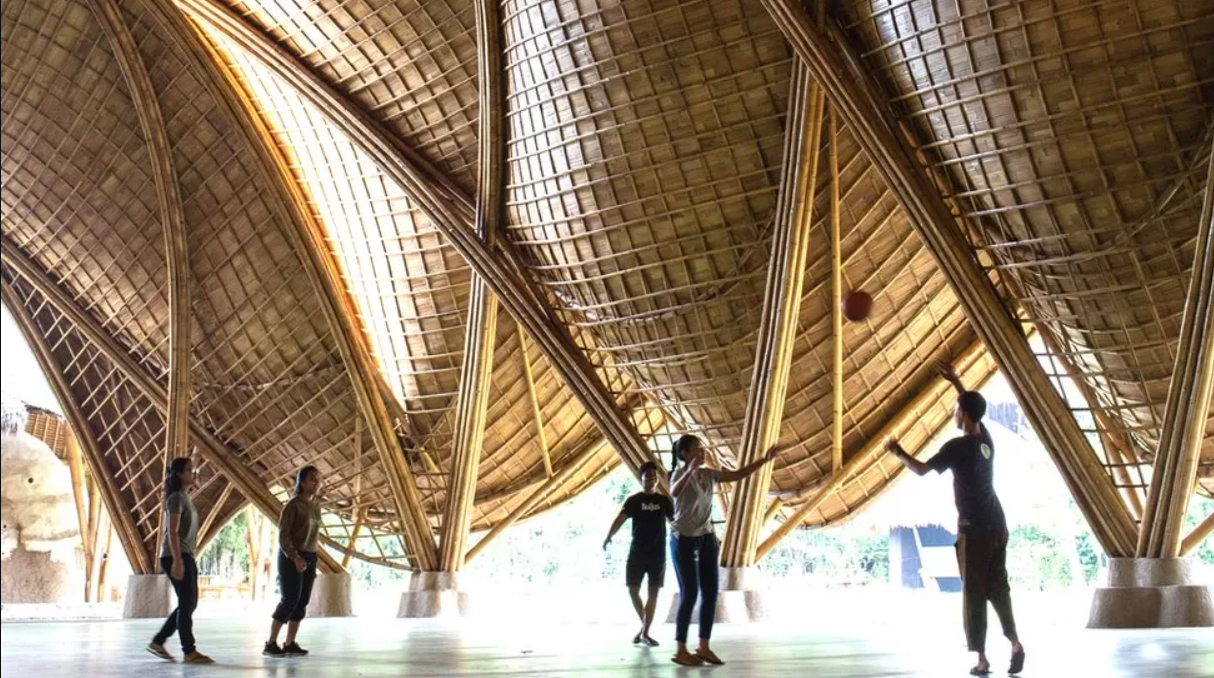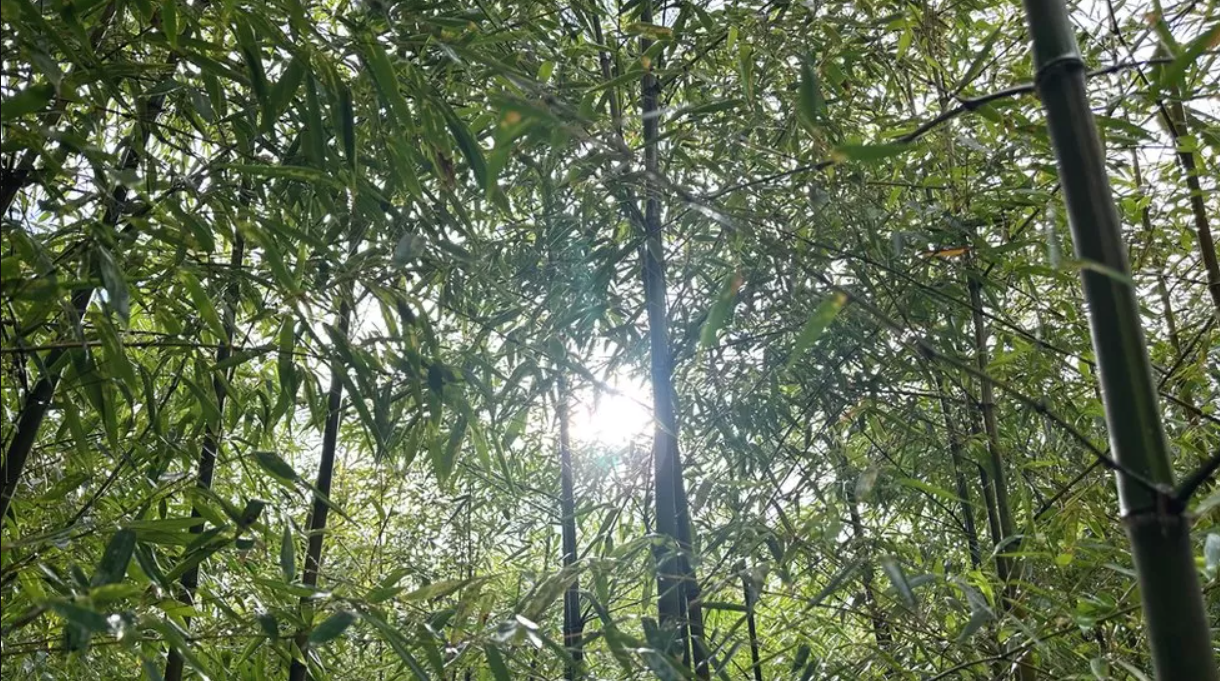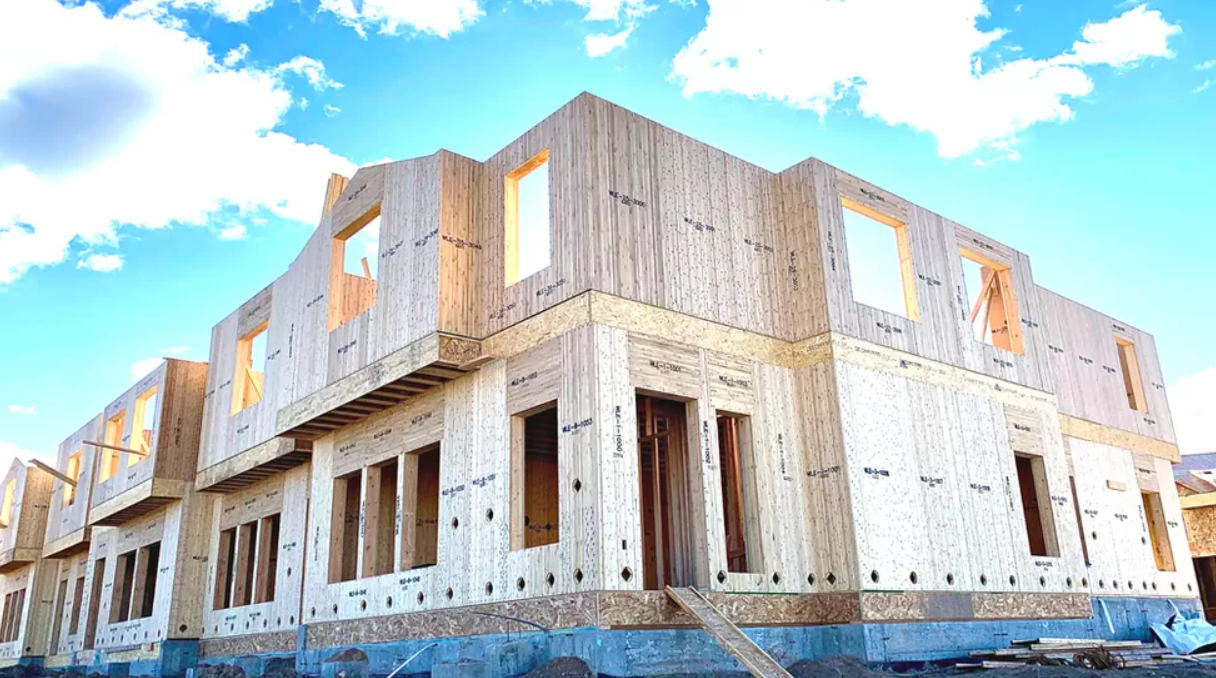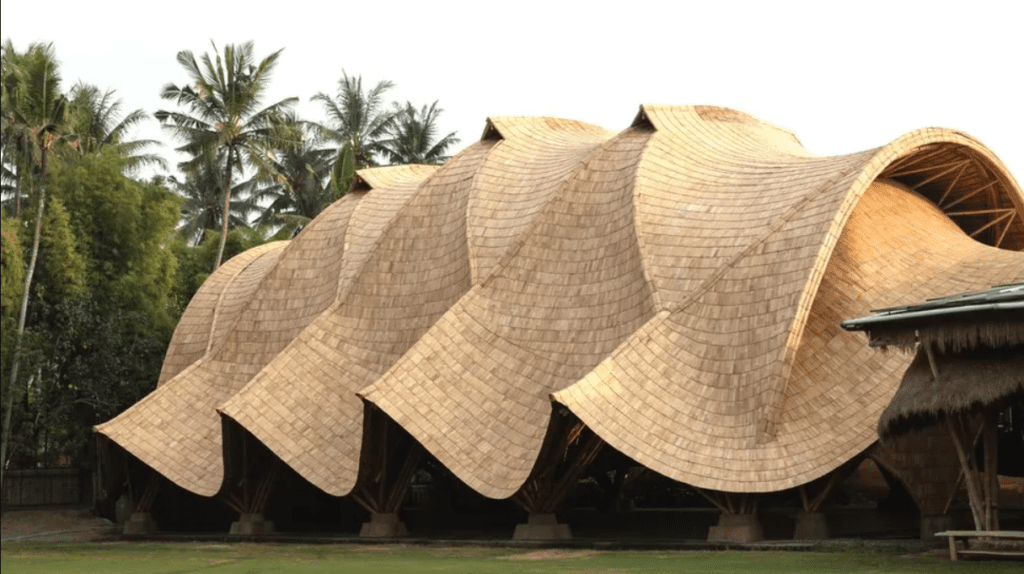Bamboo has stepped into the spotlight in the construction industry, showcased by the remarkable Arc at the Green School in Bali, a structure spanning 19 meters and designed by Ibuku Architecture Studio.
his lightweight masterpiece, completed in April 2021, utilized approximately 12.4 tonnes of Rough Bamboo, demonstrating the strength and versatility of this eco-friendly material.
Apart from its aesthetic appeal, bamboo offers environmental advantages by acting as a carbon sink during its growth, sequestering more carbon than many tree species.
According to a report by the International Bamboo and Rattan Organisation (INBAR) and Delft University of Technology, a bamboo plantation can store 401 tonnes of carbon per hectare, surpassing the capacity of Chinese fir tree plantations.


Unlike trees, bamboo is a grass and grows rapidly, with some varieties reaching one meter per day.
Its history of use in Asian construction is extensive, but in Europe and the US, it remains a niche material, often limited to flooring, kitchen tops, and chopping boards.
Structural engineer Christopher Matthews from Atelier One points out the challenge of a lack of familiarity with bamboo in Western markets.
However, he notes a growing demand, with 30% of his company’s clients now incorporating bamboo into their projects.
He mentions ventures like a school campus in New Mexico and structures in Costa Rica and the Philippines.
While bamboo is abundant and cost-effective in countries where it is traditionally used, its adoption in Europe faces initial cost challenges.


BambooLogic, the first large-scale bamboo grower in Europe, aims to address this by establishing bamboo plantations in the south of Portugal.
The company believes that bamboo cultivation has the potential to enhance soil quality by capturing CO2.
Despite these advancements, standardization remains a hurdle in Europe. Dr. Bhavna Sharma, an assistant professor of architecture, emphasizes the need to increase knowledge about bamboo’s performance in different climates.
The publication of the first engineered bamboo testing standards by the International Standards Organisation is a positive step toward supporting practitioners, designers, and engineers.
In California, BamCore, a sustainable building materials company, offers a panelized framing system using engineered bamboo and wood.


Kate Chilton, Chief Sustainability Officer, mentions that the company’s bamboo product is gaining traction, with D.R. Horton piloting it in various US developments.
As the construction industry increasingly embraces bamboo, its eco-friendly properties, and versatility might just make it a cornerstone in the future of sustainable building materials.
President Cyril Ramaphosa Applauds Israel-Hamas Agreement For Temporary Ceasefire

